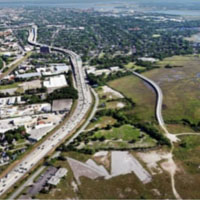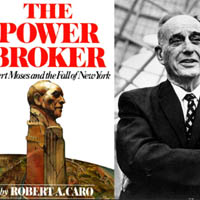


Alexis Stephens of the on-line magazine Next City featured a recent interview with Stan Humphries, chief economist of Zillow, about the current climate of homeownership and rental housing in the US. In that interview Mr. Humphries indicated that the homeownership rate has been consistent, at slightly less than two-thirds, since the 1960s. For the third that rent, he states, “…it is probably a rational strategy given our income profiles, our ages, how mobile we are, etc.”
Mr. Humphries goes on, however, “…I’m deeply concerned that renting…is no longer affordable….[R]ight now, according to our numbers, renting has never been less affordable in this country….” The shift in the 80s and 90s toward private provision of housing, stimulated by low-income tax credits and Section 8 subsidies has not filled the need.
Mr. Humphries’ concern resonates among those who are advocating for more affordable housing in Charleston. The downtown area is especially susceptible to high rental rates due to the pressures associated with the rapid growth and real estate development in the region. Michelle Mapp, Executive Director of the South Carolina Community Loan Fund, was very eloquent in her recent presentation during the forum A Vision for Charleston: Priorities for the Next Mayoral Administration. She introduced the audience to “5-year old Jordan” who “lives in the Silver Hill Neighborhood in Charleston’s Neck – a neighborhood scattered with dilapidated houses, no easy access to a full service grocery store, no daycare or health center, and no local, community-based businesses in which her family can buy goods and services.
“… Ask yourselves, ‘Can we be content knowing that Charleston took home Travel & Leisure‘s top honor for favorite North American City and #2 City in the World…, yet 1 in 4 of our children are living in poverty? How is it that the very workers that are the foundation of our tourism-based economy, like Jordan’s Mom and Dad, far too often cannot find an affordable place to live in our city and we oppose, often through our silence, every attempt to provide them with safe, decent, and affordable housing options?’ At its essence, these are economic development questions.
“The question is do we have the political will to counter NIMBY [Not In My Backyard], enact innovative planning and zoning policies, and advocate for both public and private investment to support the development of affordable housing at a magnitude and scale to meet all of our community’s needs? This may not be the popular stance, but it is the right stance.”
Not only is it the “right” stance in terms of overall community values. As Mr. Humphries stated, regarding a certain complacency among homeowners who are “…lulled into a false sense of confidence, thinking, ‘That’s a problem for some other group. Not me.’ It’s a problem for everyone, because today’s renters are tomorrow’s buyers.”
The Urban Land Institute (ULI) in its January/February 2015 issue of Urban Land lays out several strategies for creating the conditions for private development of affordable housing in its overview article recapping a recent meeting of its Affordable/Workforce Housing Council. Some strategies brought up in the discussion included: realignment of state low-income housing tax credits to reflect more appropriate housing configurations, smaller unit sizes in urban areas, reducing parking requirements to better reflect the resident requirements/needs, creating more efficient unit layouts, property tax exemptions, and partnering with organizations who own land that can be developed, such as churches, school districts, and housing authorities.
Another article in this same issue features some excellent strategies, as offered by San Francisco architect David Baker, for creating community in and around affordable housing development. It is worth a read. Take some notes since many of these ideas can translate into market-rate projects as well.
If you are looking for a way to explore this idea further, consider looking into the How Housing Matters website, a project of the Urban Land Institute made possible through the John D. and Catherine T. MacArthur Foundation.
Affordable housing is a huge issue so expect us to do a deeper dive into this topic in the near future. Building and keeping housing affordable in urban areas is a real challenge but it plays a key role in fostering a city’s livability. Support affordable workforce housing, and you will find your community has better teachers, law enforcement officers, fire fighters, and a whole range of people and their families who contribute in ways that positively impact us all.

On Monday, February 23, 2015, If You Were Mayor teamed up with the Coastal Conservation League, Charleston Moves, Historic Charleston Foundation, and the South Carolina Community Loan Fund to present a “Vision for Charleston: Priorities for the Next Mayoral Administration.”
The forum, a bit like our website, turned agenda-setting on its head. Instead of inviting the mayoral candidates to speak and tell us their platforms, we invited the mayoral candidates to attend and listen to our ideas. How’s that for counter-intuitiveness?
Local businessman John Winthrop sponsored the event and kicked the afternoon off with Teddy Roosevelt’s famous quote that reminds us that the doing of deeds is what matters: “…The credit belongs to the man who is actually in the arena, whose face is marred by dust and sweat and blood; who strives valiantly; who errs, who comes short again and again, because there is no effort without error and shortcoming; but who does actually strive to do the deeds…”
So with that, into the arena we went.
If You Were Mayor co-founder Whitney Powers emceed the event and took the opportunity to introduce many new people to this website and its goal of sharing constructive and positive solutions for our region’s ills. She also recognized how difficult it was going to be for the next mayor of Charleston to fill the shoes of Joe Riley, a vastly more experienced leader, but she left the audience with the big idea of the day: “Our engagement and our ability to translate our experiences constructively will determine the effectiveness of our next leader.”
First to the podium was West Ashley resident Charlie Smith, who outlined many of the issues that he wrote about last month on this blog. Pointing to the 10 acres of car lots, the nondescript buildings, the uncared for roadways, and the nearly abandoned Citadel Mall, he made a stirring case for West Ashley’s identity crisis. He challenged the next mayor and the community as a whole to help West Ashley get back up to standard by finding ways to reconnect the neighborhoods and actually include West Ashley in planning its own future.
Charleston Moves’ executive director Kurt Cavanaugh was astounded by the image that Charlie Smith conjured up of 10 acres of land reduced to asphalt and cars. And cars were big part of his presentation — how to slow them down and how to keep them from killing pedestrians and cyclists. Some solutions are as simple and easy as a can of white paint. It’s a political problem not a fiscal one, he pointed out.
Sausage making isn’t sexy, but Winslow Hastie of the Historic Charleston Foundation said it was time for us to roll up our sleeves and implement the plans that have already been made. In other words, time to make the sausage. The Green Plan, the Century V Plan, Gabe Klein’s Peninsula Mobility Report, and the 2015 Tourism Management Plan are all on the shelf, and need to be dusted off and put to use. It was a good reminder that our citizenry is indeed already engaged on many levels.
And then came “Jordan.” Michelle Mapp of the SC Community Loan Fund started her presentation from a very specific perspective, that of Jordan, a little girl growing up in Silver Hill, a falling-down neighborhood with big challenges and few resources. Her question for us: What will you do for Jordan? As developers rush into the Neck to claim 300 acres of waterfront land, what sort of economic development opportunity presents itself that can lift up the lowest income residents? And are we willing to push for that as a community?
Next, Coastal Conservation League’s Myles Maland tackled a huge topic, that of coastal resiliency, which is code for how do we deal with climate change and the resulting events, such as coastal floods? Our inadequate infrastructure is proving incapable dealing with rain-bombs, a phenomenon that happens when a huge volume of rain dumps out of the sky in a matter of hours. In the past, Charleston may have experienced 25 tidal floods per year. More recently, we’ve been hit with 80 per year. Maland says it’s time to get proactive and stop being reactive to this growing problem. Luckily, Charleston has been selected to participate as one of three US communities in the pilot of the Resilient America Program of the National Academy of Sciences for the next three years. It is hoped that this will result in a workable strategy since this issue of resiliency will only grow more urgent in the coming years.
Automobiles might have been the biggest villains of the day. I’on developer Vince Graham plotted the historical ascension of the automobile and showed us how accommodating the automobile became the number one policy of the federal government, from building interstates to bailing out bankrupt automakers. His grim view of the sell-out of any human-scale city was followed by a more hopeful view of transportation alternatives from landscape architect Steve Dudash, who showed all sorts of innovative, and cost effective, possibilities for moving people from point A to point B. He had us all imagining how cool it would be to have a superlight electric bus system running straight down the middle of Rivers Avenue.
To close out the speaker presentations, we traveled back out to the suburbs, and Amy Fabri addressed the issues facing James Island, the sad stepchild of Charleston who gets no love or respect. Her big plea was for more cooperation among the disparate entities that control James Island’s destiny.
The takeaway felt as positive and constructive as we had hoped. The message was that some mistakes have been made and some opportunities have been lost along the way. But, the civic leaders who spoke at this forum brought their experience and knowledge to the table and willingly shared it with the candidates, plus a very receptive audience. The audience, came from throughout the entire city, responded with even more ideas, comments, and questions. It was encouraging to hear these issues so well-received, as evidenced by the closing comments made by each of the mayoral candidates who were present.
Overall, the forum was quite an uplifting sharing of big ideas. Just like we intend for this site to be. Share your ideas today!!!!

Four of the city’s five declared mayoral candidates gathered at the Francis Marion hotel Monday. However, they didn’t speak at the forum; instead, they listened to citizens and civic leaders.

Robert Caro in his Pulitzer Prize-winning biography of Robert Moses, The Power Broker, details how Mr. Moses, in Depression-era New York City, was able to create and lead a powerful matrix of public authorities tasked with infrastructure construction. Through these quasi-public agencies, Mr. Moses was able to circumvent the “power of the purse” assigned to public officials, as well as the process of public comment, and tap a complicated array of funding sources, from bonds to tolls, in order to construct roads, “parkways,” bridges, and public facilities. His great political skills resulted in the construction of many of New York’s significant bridges, parks, housing, and roads, often funded by shifting resources away from public transit. His public works, parks, and housing were durable marvels of engineering, landscape, and architecture. Many continue to serve hundreds of thousands in the New York region. Had his vision been more broadly based, mass transit would have also seen a significant investment rather than suffer through many years of maintenance issues and neglect.
Mr. Moses shared his strategies and methodologies across the country. Many other cities and states followed his lead, using these concepts in a manner that would generally establish the pattern of sprawling suburban development, the demise of a public transportation network, and the groundwork for the rise of the now-dominant car culture. His power was unrivaled until his mindset of development led to the demolition of Pennsylvania Station. The resulting public outcry emboldened advocates, like Greenwich Village resident Jane Jacob, to stop the era of grand projects such as the Lower Manhattan Expressway that would have leveled that historic neighborhood.
Today’s scarcity of resources for public works – some might say attributable to a certain lack of political will – once again requires the Mayor to have a vision to meet needs associated with aging infrastructure and rampant population growth. A kneecap-breaking version, like that of Robert Moses, is no longer viable; but, an ability to negotiate and cajole the funding minefield will certainly be necessary.
This vision will need to balance Charleston’s provincial appeal with some real urban challenges. Existing transportation corridors will need to serve many more modes of getting around, including train, mass transit (bus, ferry, light rail, trolley, etc.), car, pedestrian and bicycle. Storm water management and other utility service infrastructure will need to be integrated with considerations of climate change, population growth, and the potential of events such as hurricanes and earthquakes. Plans for resiliency, such as this one for Brooklyn, NY, and Gabe Klein’s recent transportation plan for Charleston represent good frameworks that can provide the region with the means to address critical needs well into the future.

While technically the Halsey Institute of Contemporary Art is part of the College of Charleston, it plays a significant role in Charleston’s vibrant art scene. Mark Sloan has overseen more than 100 exhibitions (plus an annual Young Contemporaries exhibit that features a curated collection of work by CofC students) during his 20-year stint as Chief Curator and Director.
Mark, we’ll began our conversation with the organization’s mission and how that relates to making the arts an important part of life (and livability) in Charleston.
The mission was developed over several months, so I really need to share it in its entirety:
The Halsey Institute of Contemporary Art at the College of Charleston School of the Arts provides a multidisciplinary laboratory for the production, presentation, interpretation, and dissemination of ideas by innovative visual artists from around the world. As a non-collecting museum, we create meaningful interactions between adventurous artists and diverse communities within a context that emphasizes the historical, social, and cultural importance of the art of our time.
Whew! I know that sounds like a lofty set of goals, but it does establish how we, the School, the College, and our Advisory Board, see the Halsey in the ecology of Charleston’s primary art institutions – including the Gibbes Museum of Art, City Gallery at Waterfront Park, and Redux Studios. We’ve established a distinct niche for our academic museum, hosting emerging, overlooked, and often under-represented artists. Every exhibition includes a range of events and educational opportunities – most free and open to the public – including film and video, publications, lectures, and artists-in-schools.
We try to emphasize the footprint of the College within the city, especially given that the Halsey is really many people’s portal into the entire institution, both literally – with our windows on one of the busiest blocks on Calhoun Street – and, figuratively – since one does not typically march into a biology class on campus. Not only do we function for Charlestonians in this way, but we are also a unique arts destination for visitors to Charleston, offering distinct, often challenging, work from unexpected sources.
Mark, I’ve known you to be very generous with your expertise and guidance to other area arts organizations, and you’ve been a willing participant in collaborative efforts. Along those lines, what would you do if you were “Mayor?”
At the Halsey we have found that students, patrons, and staff all benefit from being unafraid to ask the “big questions,” and this has meant that we have been able to show unusual, challenging, and often experimental work. We need to cultivate Charleston artists that are empowered to explore their own passions and questions in precisely this kind of work; and foster their efforts so they can also flourish and find success in Charleston and elsewhere. Establishing an infrastructure of best practices, including resources such as legal and accounting advice, can help guide artists’ careers so they might be unburdened by some of these realities.
We can meet our cultural aspirations if we are willing to collaborate effectively, eliminate redundancies, and encourage efforts that provide a mutual benefit between our institutions, organizations, artists, students, and Charleston residents. The arts can be a plan for life, inspiring individuals and cities with the knowledge that the future will require significant reservoirs of creativity and innovation to ensure our continued success.